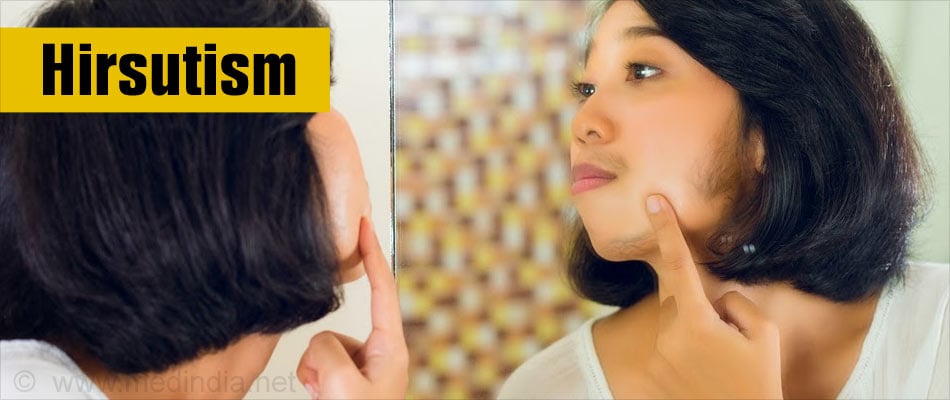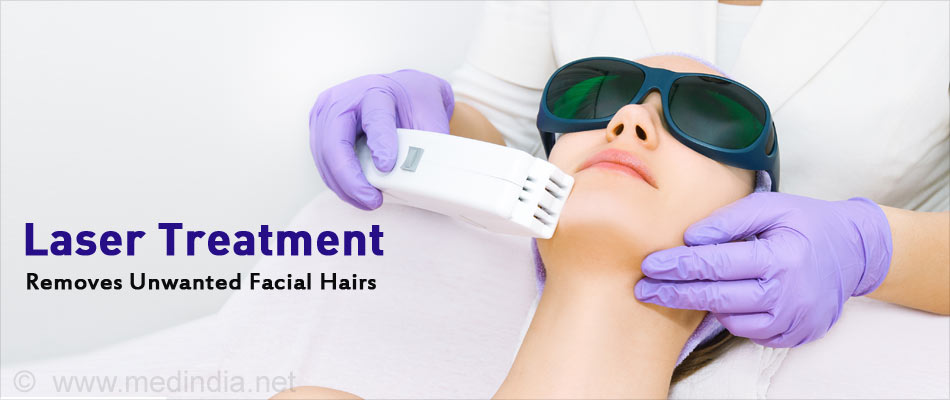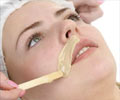- Hirsutism - (http://www.mayoclinic.org/diseases-conditions/hirsutism/basics/definition/con-20028919)
- Excessive hair growth (hirsutism) - (http://www.nhs.uk/conditions/hirsutism/pages/introduction.aspx)
- About Hirsutism - (https://en.wikipedia.org/wiki/hirsutism)
- Hirsutism: 7 Diet Tips for Treating Excessive Hair Growth in Women - (http://www.healwithfood.org/hirsutism/diet.php#ixzz45duykwfh)
What is Hirsutism?
Hirsutism is a condition where women have excessive unwanted hair in areas where the growth is normal in males but absent in females.
Excessive hair may appear on the face over the upper lip and chin, chest, back, lower abdomen, around the anus, in the genital area, or front of the thighs.

What are the Causes of Hirsutism?
Hirsutism is caused by an increase in androgens (male sex hormones) or greater sensitivity to the hormones in females. At puberty, ovaries start producing male as well as female sex hormones. Hirsutism develops when the balance between the hormonal levels is lost resulting in higher levels of male sex hormones.
Hirsutism has been commonly noted in Mediterranean, Middle Eastern and South Asian women. Following conditions in women can predispose to hirsutism:
- Polycystic ovary syndrome, where small fluid-filled sacs are present in the ovaries-.
- Cushing's syndrome, where the level of corticosteroids in the body is high, either due to excessive production of the hormone by the body or intake of corticosteroid medications
- Congenital adrenal hyperplasia, where the adrenal glands produce excess hormones
- Acromegaly (excess growth hormone)
- Resistance to insulin, the hormone which reduces blood glucose levels
- Tumors (very rare)
- Medications: e.g., danazol used for treating endometriosis, phenytoin, tetrahydrogestrinone
- Obesity

What are the Symptoms & Signs of Hirsutism?
Women with hirsutism have excessive hair growth in a pattern similar to those in males. It may be present on the face over the upper lip and chin, chest, back, lower abdomen, around the anus, in the genital area, or front of the thighs. The hair is usually thick and dark, thereby making it obvious and a cosmetic problem. Other signs that may be noted due to excessive androgen levels include:
- Deepening of voice
- Oily skin and acne
- Decrease in breast size
- Receding hairline similar to balding in males
- Clitoris enlargement
Other symptoms may be present depending on the underlying cause. These may include:
- Weight gain or obesity
- Irregular periods
- Infertility
- Thinning of skin with striae in Cushing’s disease
How do you Diagnose Hirsutism?
Diagnosis of hirsutism is based on history obtained from the patient, physical examination and certain tests.
To evaluate hirsutism in females, Ferriman-Gallwey score is used that measures amount and location of the hair.
Blood tests include tests for hormones like:
- 17-hydroxyprogesterone levels
- TSH (thyroid-stimulating hormone)
- Prolactin
- Testosterone (to determine if higher androgen levels is the cause)
- Cortisol

Urine test is done to estimate cortisol level
Imaging tests to detect cysts or tumors in the ovarian and adrenal glands. These include:
- CT scan
- Ultrasound
How do you Treat Hirsutism?
Hirsutism can be treated with:
Medications: Drugs used in the treatment of hirsutism and its associated hormonal abnormalities include:
- Anti-androgens: e.g. Spironolactone
- Cyproterone acetate
- Metformin
- Topical cream: e.g. Eflornithine
- Combination oral contraceptives
- Flutamide
Procedures for permanent removal of unwanted hair include:
- Electrolysis
- Laser therapy

Temporary methods of hair removal include:
- Epilation
- Waxing
- Shaving
How do you Prevent Hirsutism?
Hirsutism can be prevented with measures such as losing weight if you are overweight, as this can reduce androgen production. Also, if you have polycystic ovary syndrome, controlling obesity may reduce hirsutism.
Health Tips
- Reduce your calorie intake, especially during the evening. Distribute your calorie intake into 5-6 small meals with the breakfast being the heaviest. This will keep your weight under control and reduce the chances of obesity and hirsutism.
- Eat foods with a low glycemic index which do not increase blood glucose levels sharply such as non-starchy vegetables, legumes and fruits. Include enough amounts of protein in your diet. Keep control on your daily intake of fats, but don't eliminate all fats especially essential fatty acids.
- Glycyrrhizin from licorice has been found to reduce plasma testosterone levels and may be useful in hirsutism patients. However, excess use does have its side effects.
- Increase your intake of vitamin B, especially B2, B3, B5 and B6. The trace minerals chromium and magnesium reduce glucose resistance and will be useful.






